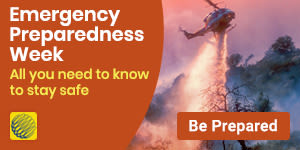Carbon monoxide poisoning following ice storm blackout leaves two dead
theweathernetwork.com
Tuesday, December 24, 2013, 2:55 PM -
Two Ontario residents are dead after carbon monoxide from a gas generator seeped into their home. The 52-year-old man and his mother were among the many affected by the ice storm that hit the GTA on the weekend. Several more carbon monoxide-related incidents were reported in the province. At least six people were transported to nearby hospitals after burning charcoal indoors in an attempt to cook and stay warm during the blackout period.
More than 100 carbon monoxide related calls were made to emergency services in Toronto on Monday night.
110 Carbon Monoxide calls in Toronto last night. Keep generators and heat sources designed for outside out of the house! #staysafe
— Michael Husnik (@MichaelHusnik) December 24, 2013
What is Carbon Monoxide poisoning?
Carbon monoxide poisoning is a product of breathing in the dangerous gas, which is produced by the burning of any sort of fuel. The gas enters the bloodstream and replaces the oxygen (a necessary element for all the cells in our bodies.)
What are some common sources?
The gas is produced by many household objects like fireplaces, space heaters grills and water heaters. When appliances are not properly installed they can allow for gas leaks. Blocked chimneys can also lead to the hazardous situation.
What are the symptoms?
Carbon monoxide poisoning can be extremely dangerous so its important to try to catch the symptoms as early as possible. Keep an eye out for unusual headaches, dizziness or nausea. As the concentration of carbon monoxide in the blood increases, the symptoms get worse. Confusion, difficulty breathing, fast heartbeat or chest pain are commonly present.
If you or anyone nearby is displaying these symptoms it is best to immediately leave the area and head to an emergency room or call 911. Those affected and able to receive oxygen therapy can recover in a few days.



